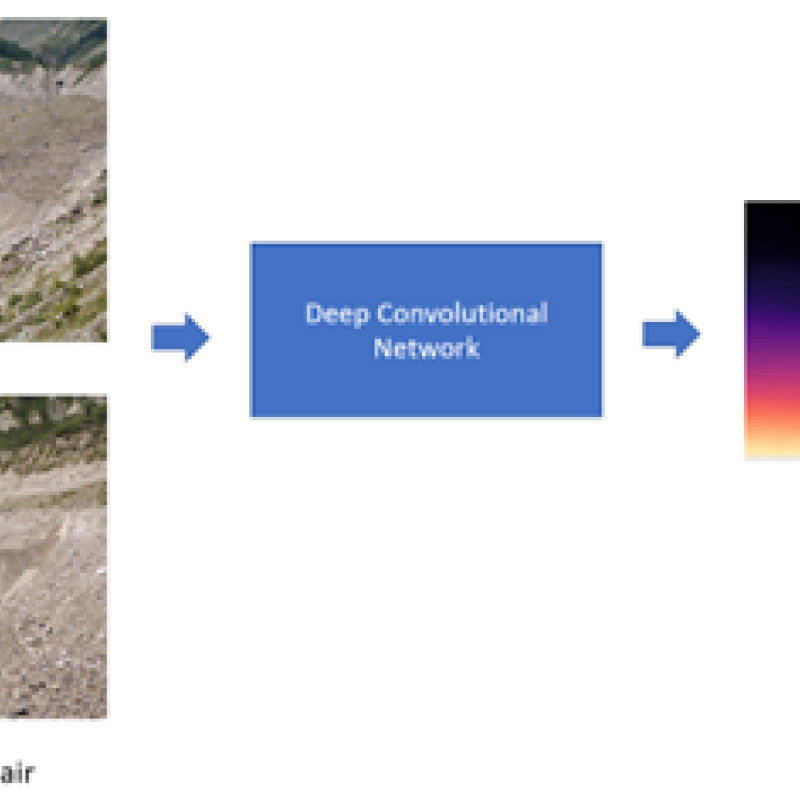Wide-baseline dense image matching for glacier monitoring using deep learning

Programming skill is mandatory (preferably Python), experience with deep learning frameworks is highly preferred (PyTorch, Keras and Tensorflow)
Glaciers store majority of the freshwater found in our planet. Due to the ever-increasing global temperatures for the past century, a trend in glacial retreat is widely observed, especially in the Northern Hemisphere. This poses various potential risks from affecting population living in the mountain areas to agricultural and water management infrastructure downstream. Monitoring these glacial objects is therefore of key importance. One efficient method to do so, is to install low-cost optical sensors in the glacial sites, derive 3D information using photogrammetry, allowing us to monitor the movement of these glaciers. Such low-cost setup often results to wide-baseline stereo-pairs. This MSc topic will design and implement a method for wide-baseline dense image matching that will be evaluated on a glacier monitoring use case.
The student will initially revise existing literature on image matching using deep learning. The student will focus on extending and generalizing either methods that works on wide baseline but produces sparse correspondences [1] or methods that produces dense correspondences but is applied to conventional (narrow-baseline) stereo pairs [2]. Publicly available benchmark datasets for wide-baseline image matching using day-to-day images [3] can be used to pre-train/optimize the models but the final test/evaluation will be performed on a wide-baseline series of stereo-pairs of a glacial scene.
[1] P. Sarlin, D. DeTone, T. Malisiewicz et al., ``SuperGlue: Learning Feature Matching with Graph Neural Networks'', CVPR, 2020.
[2] L. Wang et al., “Parallax Attention for Unsupervised Stereo Correspondence Learning,” IEEE Trans. Pattern Anal. Mach. Intell., 2020.
[3] https://www.cs.ubc.ca/research/image-matching-challenge/current
